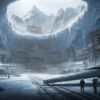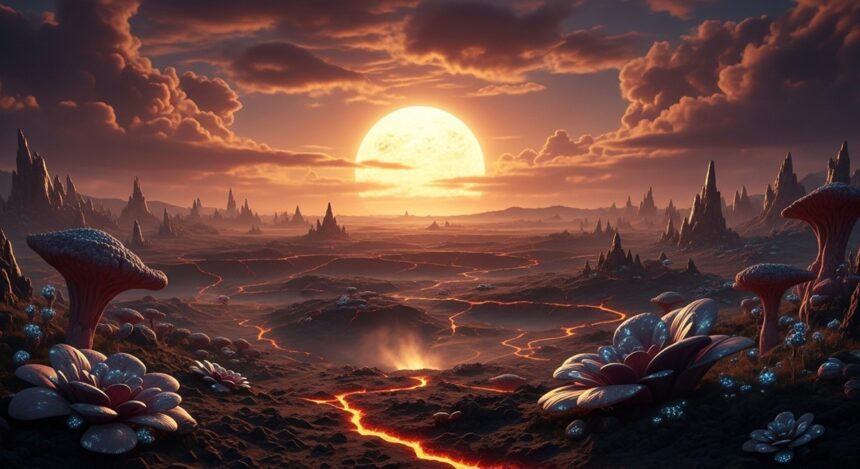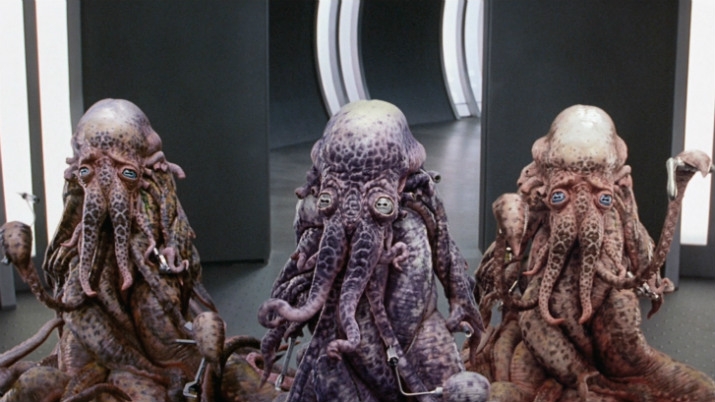To speak of a habitable Venus is to speak of a cosmic paradox. The actual planet is a pressurized oven where sulfuric acid reigns, its surface a geological coffin. To unlock its secrets, we must perform an act of metaphysical cartography: mapping a ghost planet, an alternative reality defined not by catastrophe, but by the very orbital mechanics that make its twin lethal. This is the ultimate thought experiment in evolutionary resilience.
We are left with a world of brutal, elegant symmetry, where the primary challenge isn’t the passing of seasons, but the seismic shock of its 117-day solar cycle—a two-month day followed by a two-month night. This is the Nightmare Garden, an ecosystem forced to specialize, to disappear, and to be reborn with every slow turn of the equatorial line. The result is not a second Earth, but a biosphere molded by conditions so harsh that life here thrives only by learning to die and be reborn every cycle.
The Geometry of Geological Isolation
Our hypothetical Venus escaped the final, fatal planetary burnout. It retained its oceans, allowing water and wind to erase the scars of ancient volcanic cataclysms that had resurfaced 92% of the planet some 400 to 500 million years ago. This crucial difference—the presence of water—changed everything. The relentless grinding of water and wind over half a billion years of biological evolution has destroyed mountain ranges and smoothed the relief, resulting in a geography radically different from the Earth’s.
Because the planet lacks plate tectonics, its landmasses are eternal, isolated islands: the cool, subpolar Ishtar Land and the scorching equatorial furnace of Aphrodite Land. This isolation is a prime engine of evolution. Life on every scrap of land, from the massive continents to the smallest tropical island, develops along fiercely independent lines, creating a patchwork of unique biospheres all governed by the terrifying dictates of the long day. The lack of a nearly vertical axis means true seasonality is absent; instead, the colossal 117-day solar day replaces thermal seasons with an extreme daily light-dark “seasonality.”
The Climate of Extremes
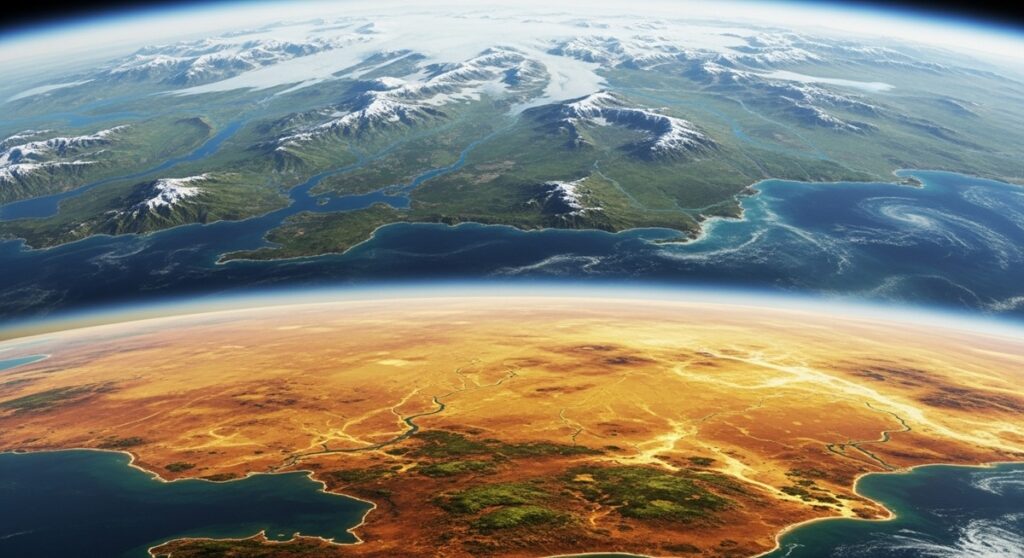
Even with the Sun slightly subdued, this Venus is hotter than the Earth’s Mesozoic Era. The ocean mitigates the long night near the poles on Ishtar Land, where temperatures fluctuate moderately from +5 to +25 degrees Celsius during the day, making life temperate, if unconventional, with the possibility of snow at high altitudes. Conversely, on Aphrodite Land, the heat is lethal. Daytime temperatures over the plains can soar to +80 to +90 degrees Celsius, a hyperthermia that dictates that all organisms must confront both the long period of positive-temperature darkness and the tropical zone’s midday hyperthermia.
The Resilient Flora and Ocean Shifts
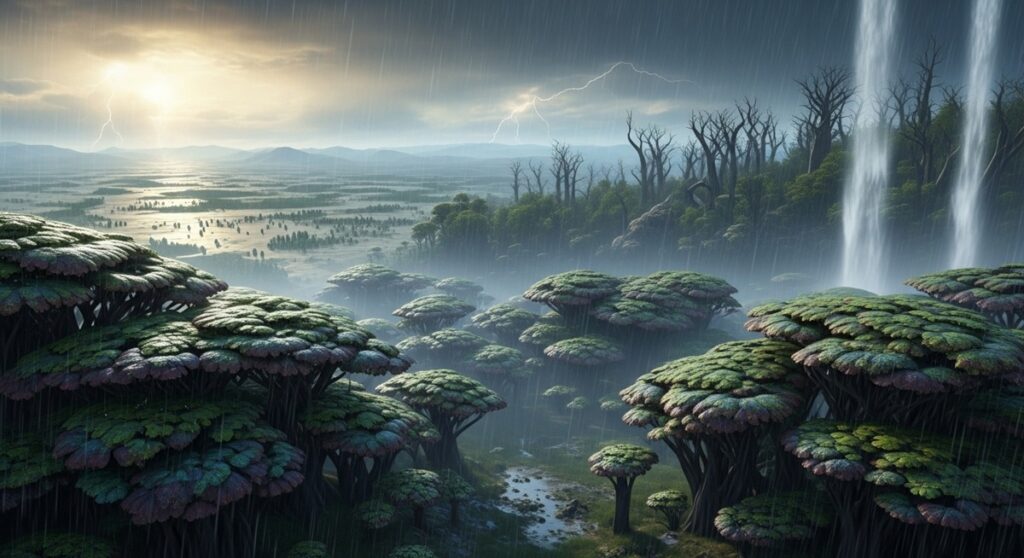
The large ocean area and constant evaporation make Venus a place of torrential, heavy rain, which is vital for enabling plant life to thrive in a world that would otherwise be sterilized by heat.
On the circumpolar Ishtar Land, the climatic factor is light, not temperature. The plant life here faces a two-month “winter” of absolute darkness. Instead of preparing for cold, deciduous forests prepare for night, opting to shed their leaves because photosynthesis becomes impossible, forcing plants to survive on stored energy when the planet is plunged into shadow.
As one moves toward the equator, the diurnal seasonality becomes dominant on Aphrodite. Survival means going underground, and the equatorial flora develops a revolutionary survival strategy: The Quickening and the Retreat. Plants evolve a deep, energy-rich rhizome beneath the lethal heat zone. At dawn, with an excess of sun, water from evening rains, carbon dioxide, and heat, growth is unprecedented; sprouts rush up, turning barren plains into a forest in weeks. However, as the heat approaches the unbearable 80-degree mark, the plant quickly transfers all valuable nutrients back to the underground rhizome, disconnecting the surface “tops” from life support to avoid being cooked alive, only to be resurrected at the next dawn.
The Two Shifts of the Sea
The alternative Venusian sea must adapt to the same extremes. Water’s high heat capacity protects the deeper oceans, but tropical shallow waters, where the sun’s energy is absorbed by the bottom, become boiling death traps. Near the equator, shallow waters rapidly heat above the lethal 42-degree Celsius threshold. This zone violently revives at dawn as creatures emerge to feed, and becomes desolate by evening, resulting in only half the productivity of terrestrial tropical waters.
In temperate and high latitudes, the two-month night is the issue. When the sun sets, photosynthesis stops, and the primary food resource becomes detritus. Diatoms turn into spores, and zooplankton die off, leaving a lean, low-oxygen abyss where blind, slow-moving creatures survive on meager organic matter.
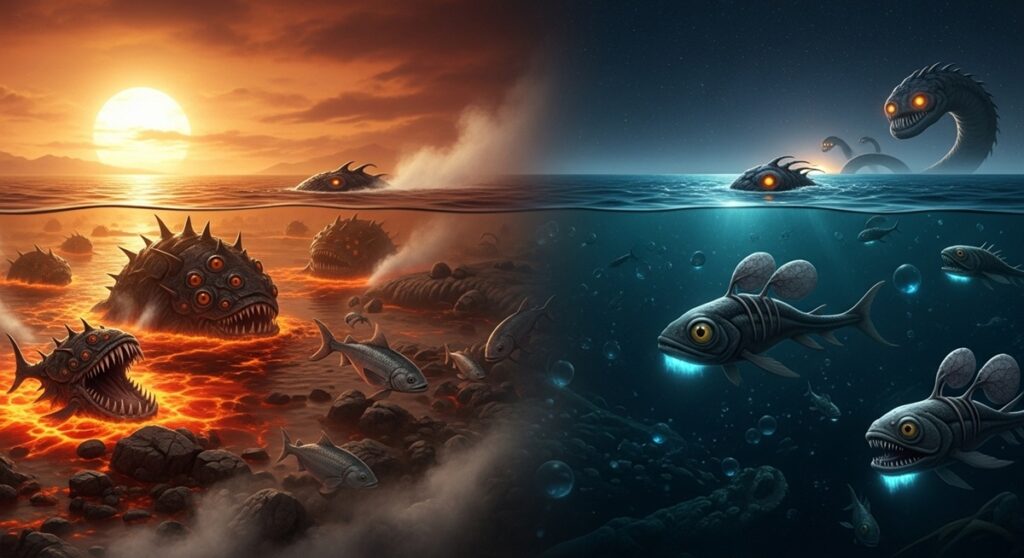
The Venusian ocean operates in a clear two-mode environment. Daylight Mode is rich in oxygen, with fast, streamlined silvery fish navigating by vision. Night Mode sees the sea become an abyssal environment where oxygen drops sharply, carbon dioxide rises, and absolute darkness reigns. Speed is useless; the winners are creatures with huge eyes, bioluminescence, and massive mouths. Over evolutionary time, diurnal fish, to survive the anoxic, predatory night, develop defenses, including the ability to breathe atmospheric air—lungs—to maintain metabolic power. Other organisms adopt massive, two-month suspended animation periods. The ultimate strategy for some large marine animals is migration after the sun, perpetually chasing the dawn to remain in the photic zone.
Land Fauna: Cycles of Isolation and Hyper-Migration
Since plate tectonics is absent, evolution on each land piece proceeds independently until winged insects distribute across the globe.
Aphrodite: The Twice-Boiled World
The equatorial continent of Aphrodite is the planet’s thermal extreme. The air temperature rises to +80 degrees Celsius, and the shallow water can hit +60 degrees. Life on this continent is forced into a twice-boiled cycle. In the middle of the day, all life is forced underground, with animals retreating into burrows. The lush, grassy forests of the morning are literally scorched and burnt out by the sun. This deprivation breaks only when the evening brings torrents of hot, atmospheric rain, after which the continent erupts in nocturnal frenzy as huge arthropods and colonizing turtles emerge from their shelters to process the dead organic matter. This darkness is a time of intense predation, a rapid, resource-intensive boom followed by a total systemic collapse, all compressed into a single, agonizing day.
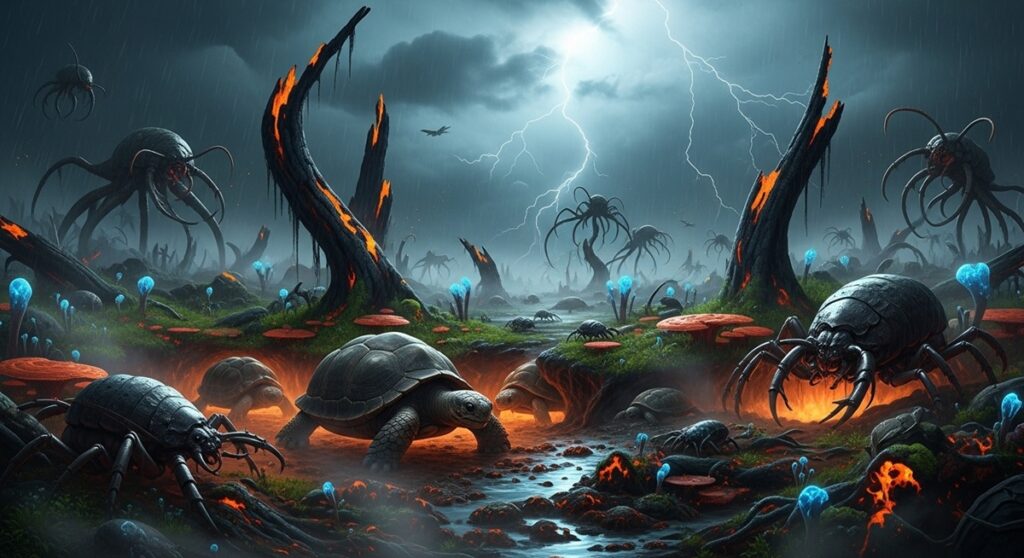
The endemic arthropods and colonizing turtles are the dominant fauna here. Vertebrates, like amphibians, find the equatorial land inaccessible due to the lethal heat and afternoon drying of rivers. Thus, for $400$ million years, Aphrodite remains a world dominated by arthropods, which evolve specialized adaptations to the heat, spending midday in deep burrows and operating as a “land of rustles” at night, where blind, multi-legged creatures prey on one another. This world is analogous to Earth’s early Carboniferous period.
Ishtar and the Avian Engine
Vertebrates are restricted to Ishtar Land, the temperate polar refuge. Here, the first terrestrial quadrupeds—ichthyostegs—evolve into “fat lizards,” giving rise to reptiles and animal saurs. The unique geological isolation of the islands provides the perfect incubator for the first reptiles to return to the sea, where the turtle becomes the master of the Venusian archipelago. Turtles master the art of survival by becoming specialized burrowing reptiles, the only vertebrates to successfully conquer the Aphrodite heat, a crucial evolutionary leap that allows them to endure the equatorial hell.
The appearance of birds on Ishtar led to the final, defining evolutionary force: hyper-migration. Diurnal migratory birds cannot simply wait out the two months of darkness. Instead, they execute a precise form of longitudinal migration, flying overnight from one side of the vast continent to the opposite, where dawn is just breaking. They effectively live in a state of perpetual daylight. This complex lifestyle demands immaculate timing for nesting and chick-feeding, coordinating precisely with the peak productive period at specific longitudes. Due to the total darkness of the moonless night, true nocturnal birds cannot survive; they are replaced by universal vision species and the predatory migratory bats, who must still follow the twilight zone to avoid the long-duration darkness.
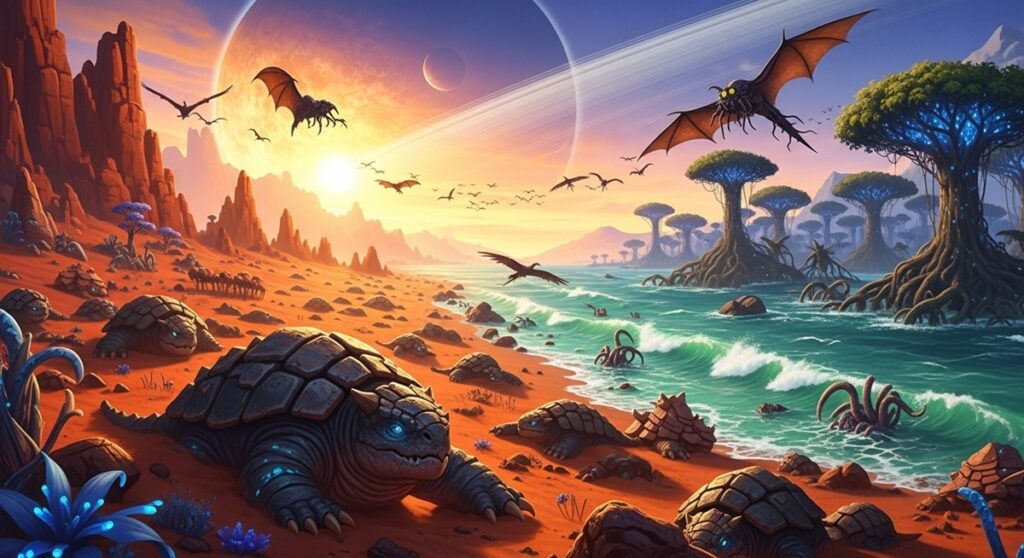
The hyper-migratory birds treat Aphrodite not as a home, but as a vast, high-risk pantry. They must nest and incubate in the cooler latitudes of Ishtar, relying on the brief morning window of resource availability on Aphrodite to build up the massive fat reserves needed to feed their young. The migratory bats are the true masters of the dark side, launching sustained, nocturnal raids on Aphrodite, preying on the giant arthropods, only to retreat to the cooler islands at dawn to survive the solar onslaught.
The Ultimate Test of Life
The thought experiment of a habitable Venus reveals a truth about life itself: it is defined by its ability to adapt to the intolerable. This alternative Venus, with its two-month days, two-month nights, and boiling equatorial plains, becomes a study in evolutionary resilience.
This is not a romantic ghost planet. It is a world where survival means constantly outrunning the extremes—fleeing the sun, fleeing the darkness, and fleeing the lethal heat. It is a planet where plants practice ritual death and rebirth, where the sea works in shifts, and where the most successful creatures are those that learn to either migrate perpetually or disappear completely underground. The history of life on the Nightmare Garden of Venus is the history of adaptation taken to its absolute, beautiful, and terrifying limit.




